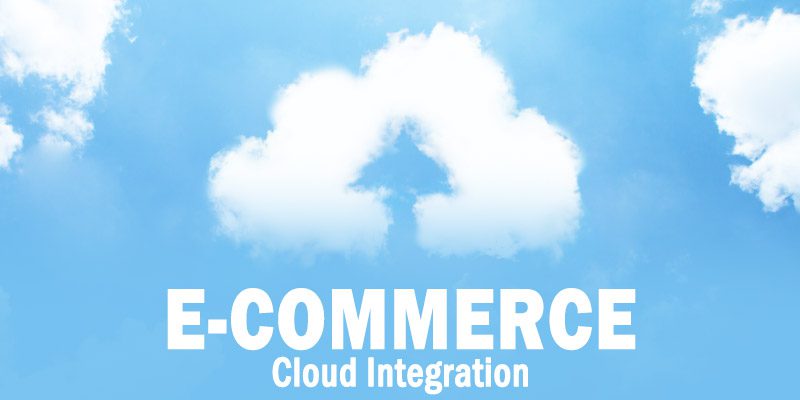5 Business-Saving Benefits of Cloud E-Commerce Integration for SMBs


This is part of Solutions Review’s Premium Content Series, a collection of contributed columns written by industry experts in maturing software categories. In this submission, Cleo CTO John Thielens outlines five business-saving benefits of cloud e-commerce integration for SMBs.
 The need for cloud-based e-commerce integration increased astronomically in the past few years – especially since the outset of the pandemic. More manufacturers and retailers embraced online sales as brick-and-mortar stores closed due to pandemic restrictions. However, now many of those brick-and-mortar locations have re-opened, leaving understaffed small-to-medium-sized enterprises to balance managing their eCommerce and direct-to-consumer (D2C) transactions with re-opened brick-and-mortar lines of business. Automating certain aspects of digital transactions with eCommerce integration will enable these understaffed shops, which are often tight on budget, to balance their newfound online sales success with the re-establishment of their traditional lines of business.
The need for cloud-based e-commerce integration increased astronomically in the past few years – especially since the outset of the pandemic. More manufacturers and retailers embraced online sales as brick-and-mortar stores closed due to pandemic restrictions. However, now many of those brick-and-mortar locations have re-opened, leaving understaffed small-to-medium-sized enterprises to balance managing their eCommerce and direct-to-consumer (D2C) transactions with re-opened brick-and-mortar lines of business. Automating certain aspects of digital transactions with eCommerce integration will enable these understaffed shops, which are often tight on budget, to balance their newfound online sales success with the re-establishment of their traditional lines of business.
Put simply, eCommerce integration is a means of connecting an organization’s back-end systems with an eCommerce website or external trading partner’s system. This facilitates the flow of data between the individual systems, providing instantaneous updates on transactions and the flow of goods across an organization’s ecosystem of customers, partners, and suppliers.
Five Benefits of Cloud E-Commerce Integration
Companies grappling with handling increased demand, especially those with limited resources, can lean on e-commerce integration to make business processes more efficient, including:
Automating manual data entry
Integrating e-commerce and back-end systems, such as ERP or CRM, eliminates the need for manual order entry and re-entry, as the systems are connected and updated automatically. The time it takes to exchange data between systems is also decreased, especially when organizations leverage a modernized e-commerce platform that provides customer satisfaction capabilities.
Error-Free Data and Inventory Levels
In addition to reducing the amount of manual work needed for data entry, e-commerce integration ensures that inventory synchronization and exchange information is accurate and reflected in both back-end systems and e-commerce platforms. Manual operations always introduce opportunities for error. So, removing manual work significantly reduces the risk of error. Integration platforms that connect eCommerce systems also automate real-time tracking updates and pricing – speeding up the time it takes to log information.
Real-time Notifications for Customers
Real-time synchronization of inventory levels and the flow of goods throughout the supply chain enable automated updates to customers, notifying them of when their orders are processed and shipped, as well as for partners and suppliers, who will need to be notified when inventory items must be replenished or shipped.
Optimized Item Pricing
Typically, when an e-commerce-enabled company changes the price of an item in its inventory, a worker must update that information in both the back-end system as well as the e-commerce platform. Automated synchronization of inventory levels and pricing provided by e-commerce integration means workers can eliminate this repeat work and focus on resolving customer and order issues.
Expanding a Business’ E-Commerce Footprint
The level of automation enabled by cloud e-commerce integration provides businesses with the agility and adaptability to operate within several different e-commerce platforms without losing efficiency in the digital or brick-and-mortar marketplaces. This provides companies with the opportunity to engage new markets of potential customers and diversify their revenue streams without increasing overhead or operational costs.
Expand & Increase Agility for Market Success
Small-to-mid-size businesses stand to achieve potentially business-saving benefits from cloud e-commerce integration technology. As certain processes are automated and optimized, these organizations can pursue opportunities on new e-commerce platforms and marketplaces without sacrificing the success of their brick-and-mortar or traditional lines of business. Supply chain-oriented companies that embrace the increased speed and agility provided by modern integration technology will possess the necessary capabilities to succeed in future supply chain upsets and market disruptions.





















